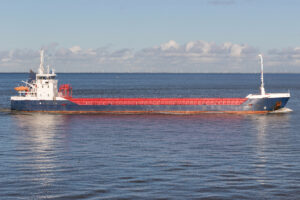Geopolitical turmoil in the Red Sea and ongoing drought at the Panama Canal continued to disrupt LNG supply routes.
LNG prices saw a notable recovery in the second quarter, largely recouping the losses incurred during the previous winter months.
The downward momentum of the freight market during the first quarter has been effectively reversed, especially towards the end of the second quarter, driven by an anticipated uptick in seasonal demand and an actual increase in freight inquiries, according to Allied Shipbroking analyses.
Interest in the secondhand market appears consistent, with S&P activity during the second quarter of 2024 being in line with that noted during the same time frame the year prior.
In parallel, the orderbook remains elevated, with 349 vessels on order, equating to 59% of the current fleet.
Newbuilding contracting activity has doubled y-o-y, with the second quarter of 2024 recording a total of 26 contracts.
“However, the appetite for new orders has declined from Q1 2024 due to high newbuilding prices and limited yard availability, particularly in S. Korean yards, where new slots are now stretching to 2028,” reports the shipbroker, which forecasts the LNG market to remain “cautiously optimistic.”
The IEA forecasts a 2.3% increase in global LNG demand in 2024, primarily driven by a 4% expansion in the Asia-Pacific countries (APAC), which will account for 40% of this new demand.
“Global gas demand is forecast to grow by 2.3% in 2024, revised down from 2.5% following a mild Q1,” said the Paris-based organisation International Energy Agency (IEA).
“Demand growth is expected to be concentrated in fast-growing Asian markets,” IEA added.
At the same time, the LNG market is expected to face pressure from the substantial influx of new vessels expected to enter service, likely exceeding demand growth.
Indeed, in 2024, an additional 50 vessels are scheduled for delivery, bringing the annual total to a record of 66.



